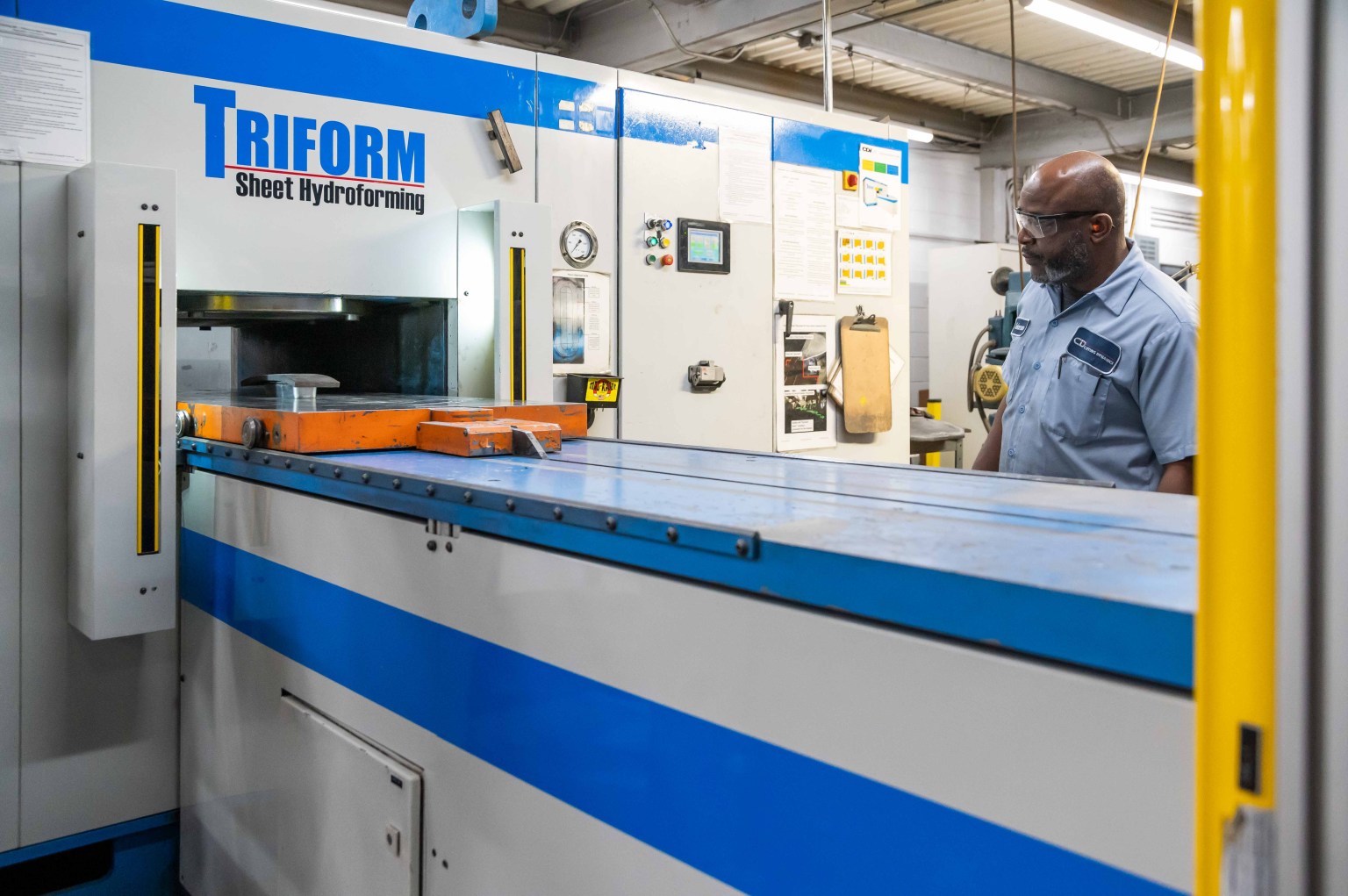JULY 9, 2024
Fluid cell forming, or fluid cell sheet hydroforming, is an advanced metal forming process used primarily in the aerospace, automotive, and other high-precision industries. It involves using a high-pressure hydraulic fluid to form metal sheets into complex shapes, typically over a single-sided die.
We’ve previously examined hydroforming and examined how the metal forming process is widely used in the aerospace industry due its ability to produce complex shapes with a single tool — in a single setup — with excellent structural integrity. Today, we’re dialing in on fluid cell forming and will detail how its process is different and how it accentuates other factors in the industry. Let’s get started.
Unmatched value for critical needs: Connect with Re:Build Cutting Dynamics today to discuss your next aerospace manufacturing project.

This type of hydroforming pushes high-pressure fluid into a bladder situated above the flat blank. This forces the metal, placed over a single side tool, to conform to the desired shape by creating both vertical and horizontal pressure. The result is a simple or complex shape designed for performance in any industry.
At Re:Build Cutting Dynamics, our customers commonly use this process for quick, efficient, and cost-effective results as it transforms ductile metals into intricate components. We especially recommend the process for projects that demand intricate parts that are complex, asymmetrical, or long and shallow.
The process works particularly well on aluminum, but we can also use any cold-formed metal including copper, nickel, steel, and stainless steel.
Fluid cell sheet hydroforming offers several key advantages that make it ideal for aerospace applications:
The ability to form complex shapes with deep draws, compound curves, and intricate details is unmatched. This is crucial in aerospace, where components must often meet exacting specifications.
The process allows for the use of thinner metal sheets without compromising strength. This not only reduces material costs but also contributes to the overall weight reduction of the aircraft, enhancing fuel efficiency.
By using single-sided tooling, fluid cell sheet hydroforming significantly reduces tooling costs — by nearly 50% — when compared to traditional matched-metal stamping tools. This makes it an attractive option for low to medium volume production runs, where traditional methods might be prohibitively expensive.
Fluid cell sheet hydroforming is already making a significant impact in aerospace manufacturing. Some of the many applications taking advantage of this process include:
Aircraft Panels — The process is ideal for forming exterior panels that are lightweight yet strong, contributing to the overall efficiency of the aircraft.
Structural Parts — Structural components, which must meet stringent safety and performance standards, are also being produced using this technology.
A Cut Above: Explore how the precision afforded by CNC machining is critical to the aerospace industry. Read more here.
The future of aerospace manufacturing is taking shape — quite literally — through the power of fluid cell sheet hydroforming by offering a combination of precision, efficiency, and cost-effectiveness. As the aerospace industry continues to evolve, this technology will play a crucial role in meeting the demands of tomorrow’s aircraft, enabling the creation of components that are lighter, stronger, and more efficient than ever before.
At Re:Build Cutting Dynamics, hydroforming has long been one of our core competencies — and just one among a long list of capabilities that includes hot forming titanium, precision machining, bending and forming, expertise in advanced thermoplastic composites, and much more.
We’ve invested and optimized our hydroforming operations, as evidenced by our implementation of the Triform fluid cell sheet hydroforming press from Beckwood Press Company. Featuring a universal diaphragm with 10,000 psi applied across the material’s surface, it forms the metal into any shape placed in the chamber. It allows high-speed, rapid tool changes to form parts with low-to-moderate complexity, and eliminates the need for matched die sets and decreases overall tooling costs. The rapid cycle length of 32 seconds decreases overall turnaround time.
Connect with our team today to learn more about how our fluid cell forming can improve your part producing efficiency.
Our team at Re:Build Cutting Dynamics wants to ensure that all your questions regarding fluid cell hydroforming have been answered. With that in mind, feel free to contact us today with any questions you may have, as we look forward to assisting you.
Re:Build Cutting Dynamics
980 Jaycox Road
Avon, OH 44011
Re:Build Cutting Dynamics is a component manufacturer specializing in precision machining, hydroforming, and hot-forming titanium for the aerospace industry. We produce high-quality metallic components that meet the requirements of aerospace applications.
All rights reserved Re:Build Manufacturing – Cutting Dynamics ©2024